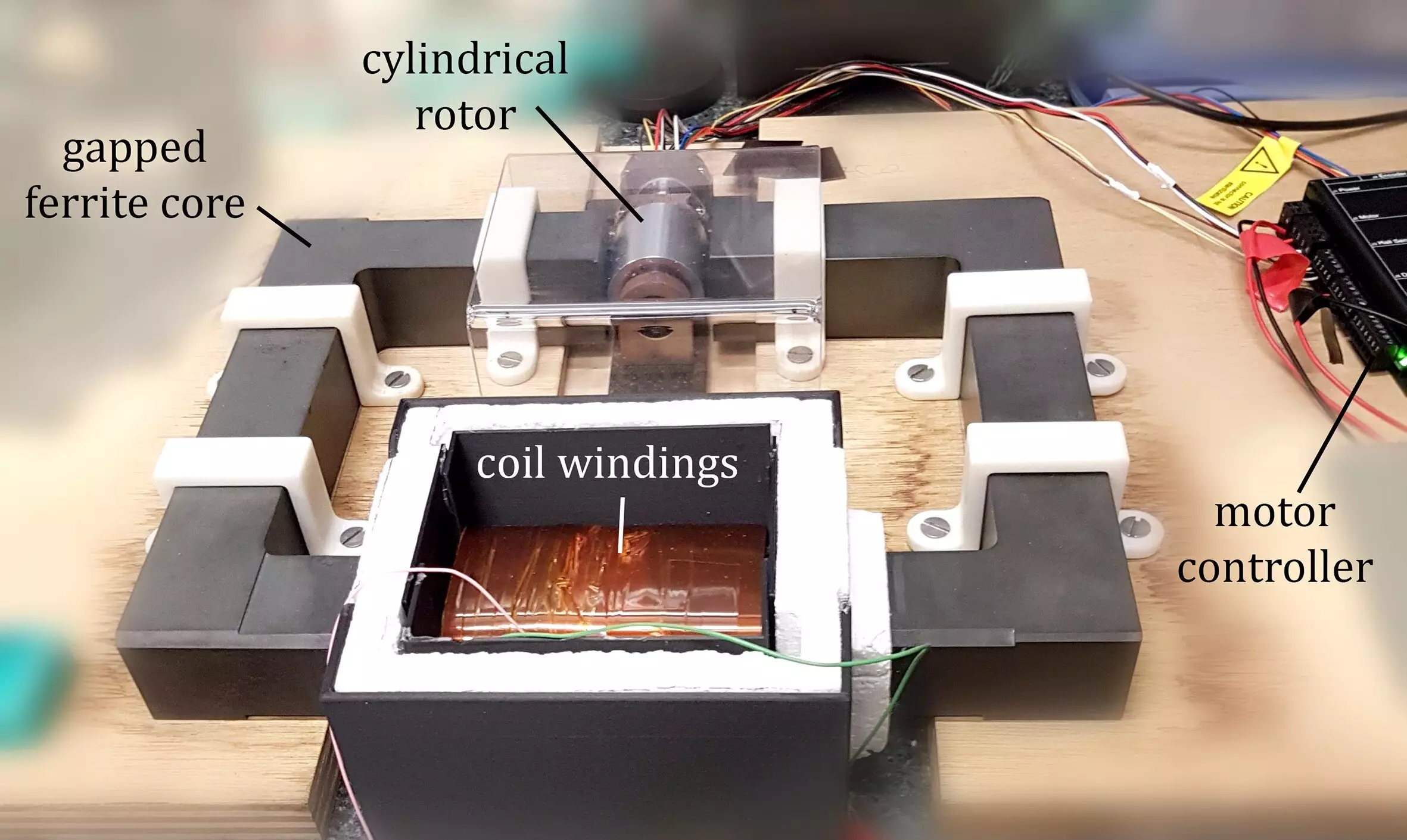The quest for understanding the interactions of waves with rotating bodies has captivated physicists since the mid-20th century. The Zel’dovich effect, theorized by Yakov Zel’dovich in the 1970s, proposed a fascinating principle: that waves with angular momentum could be amplified when encountering a rotating object under specific conditions. While this notion has lingered in theoretical discourse for decades, its practical demonstration eluded scientists—until recently. A research team from the University of Southampton has successfully substantiated this theory for electromagnetic waves, marking a significant milestone that underscores the depth of our understanding in wave mechanics.
Through an innovative experimental setup involving an aluminum cylinder, researchers demonstrated that electromagnetic waves’ interaction with a rapidly rotating body could lead to amplification rather than absorption. Dr. Marion Cromb, a pivotal figure in this research, explained that the cylinder’s speed needed to surpass the frequency of incoming electromagnetic radiation to elicit this unusual response. By judiciously manipulating the resonant circuit and the spinning metallic structure, the team was able to meet the precise conditions necessary for observing the Zel’dovich effect. Their findings, outlined in the journal *Nature Communications*, showcase how relatively straightforward equipment can provide insights into complex phenomena.
The significance of these results extends beyond mere observation. The researchers adeptly linked the Zel’dovich effect to the widely recognized Doppler effect, a phenomenon that every person encounters daily. For instance, the shift in the pitch of a passing police siren—a sound fluctuating in frequency as the vehicle approaches and retreats—is a familiar demonstration of how movement affects wave perception. The research not only bridged classical acoustics with electromagnetic theory but also illuminated the fundamental characteristics linking various wave interactions, showcasing the interconnectedness of physics itself.
What makes the Zel’dovich effect particularly intriguing is its relationship with a concept sometimes referred to as the “rotational Doppler” effect. Here, the amplification of waves occurs when their angular frequency shifts to a ‘negative’ state from the cylinder’s rotating perspective. This phenomenon challenges conventional notions about wave absorption, leading to an amplification scenario where the wave emerges with greater energy than it originally possessed. Such a finding invites a re-examination of wave-object interactions, suggesting a new paradigm in the understanding of electromagnetic behavior.
As the researchers noted, the successful observation of the Zel’dovich effect in sound waves, and now in electromagnetic fields, hints at its fundamental nature in the universe. Not only does this deepen theoretical comprehension, but it also sets the stage for future explorations at the quantum level. The potential for utilizing a rotating cylinder to amplify quantum vacuum fluctuations entwines this discovery with the realm of cutting-edge scientific inquiry, where the boundaries between classical physics and quantum mechanics become increasingly blurred.
The implications of this groundbreaking experiment extend beyond theoretical physics; electrical engineers may find inspiration in these findings. Improvements in the design of induction generators, critical components in devices such as wind turbines, could emerge from further exploration into the properties and behaviors established by the Zel’dovich effect. The implications of harnessing wave amplification could translate into enhanced efficiency and performance in energy conversion technologies.
Professor Hendrik Ulbricht, a key contributor to the project, expressed optimism about pursuing the quantum manifestation of the Zel’dovich effect. This next step not only promises to deepen our understanding of physical phenomena but also could lead to technological advancements that may revolutionize how we approach energy systems and quantum technologies.
Underscoring the human element of this scientific endeavor is the acknowledgment of teamwork and perseverance—especially during the challenges posed by the COVID-19 pandemic. The collaborative spirit shown by the research team is a testament to the innovative drive that characterizes modern science. This discovery exemplifies how curiosity, rigorous experimentation, and collaborative efforts can culminate in breakthroughs that reshape our comprehension of physical laws.
The successful demonstration of the Zel’dovich effect using electromagnetic waves is a landmark achievement, offering promising paths for research and application. As the scientific community continues to unravel the intricacies of wave dynamics and their interactions with rotating bodies, one cannot help but anticipate the exciting discoveries that lie ahead in this multifaceted area of study.

